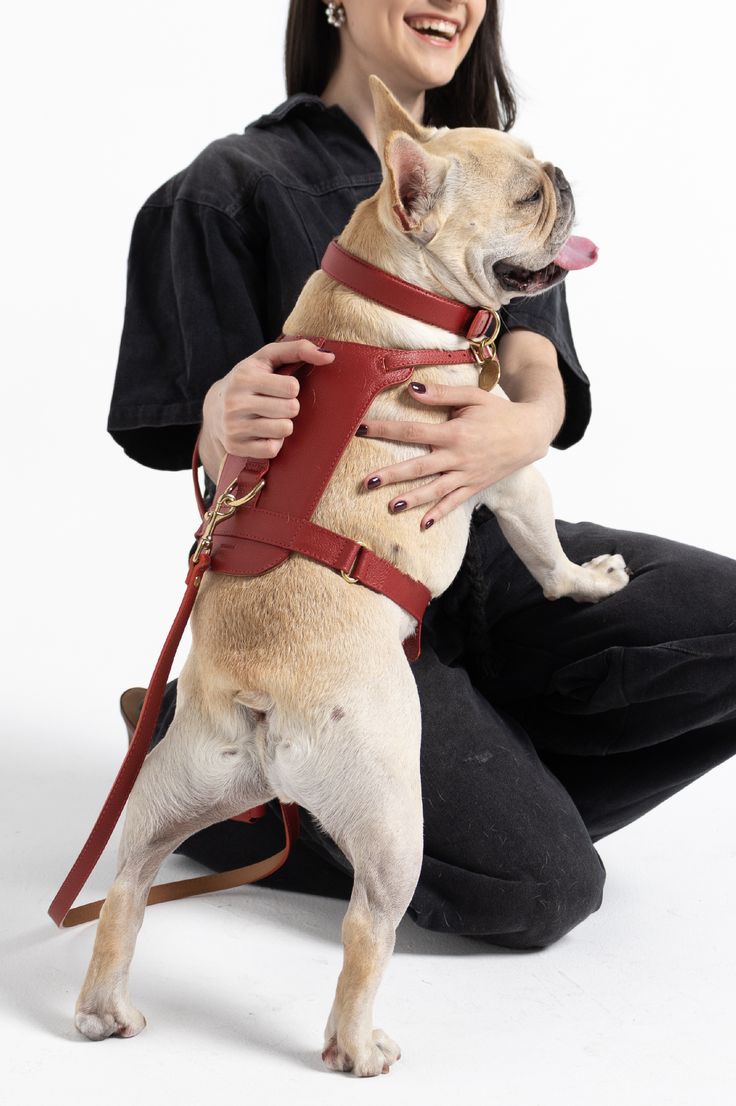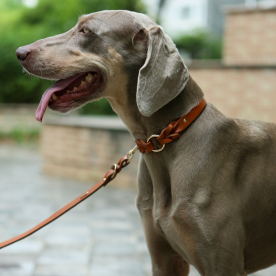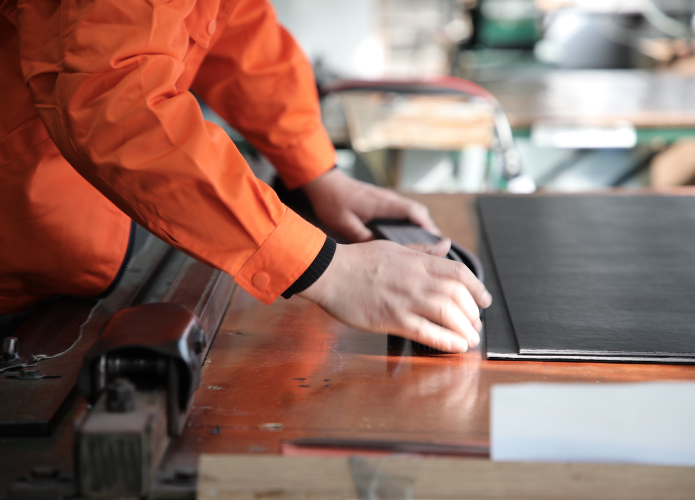How Do You Train A Dog Who Hates Leashes?
Learn how to build trust, use the right dog training leash, and incorporate positive reinforcement techniques. Explore tips on choosing custom dog leashes for comfort and control.
Training a dog who dislikes dog leashes can be a challenging but rewarding experience. Leashes are essential tools for ensuring your dog's safety and promoting good behavior in various settings. However, many dogs initially resist wearing a dog leash due to fear, discomfort, or lack of familiarity. In this comprehensive guide, we'll explore effective strategies to train your dog to accept and even enjoy wearing a leash. Along the way, we’ll delve into the benefits of different types of dog leashes, including custom dog leashes, and highlight Furnergy, a brand renowned for its high-quality pet products.
Why Your Dog Dislikes Dog Leashes
Before addressing the problem, it’s essential to understand the root cause of your dog’s aversion to dog leashes. Dogs may dislike dog leashes for several reasons:
- Fear or Anxiety: For some dogs, a leash may symbolize restriction, punishment, or a negative experience. This could stem from a lack of positive exposure or a past traumatic incident.
- Lack of Familiarity: Puppies and untrained dogs might not understand what a leash is or what it’s for. Without proper introduction, they might view it as something foreign and scary.
- Discomfort: The material, weight, or design of the leash might cause physical discomfort. For example, a rough or heavy leash could irritate their skin or restrict movement.
- Overstimulation: High-energy dogs often want to explore their surroundings freely. The idea of being restrained by a leash can frustrate them, leading to resistance.

How to Train A Dog Who Hates Leashes: Step-by-step Guide
Step 1: Choose the Right Leash
Selecting the right leash is the foundation of successful training. The type of leash you use can significantly impact your dog’s comfort and your overall training experience. Let’s explore the main options:
Standard Dog Leashes
- Features: These dog leashes are ideal for everyday use and come in a variety of materials such as nylon, leather, and chain. They typically range from 4 to 6 feet in length, providing a balance between control and freedom.
- Best For: Walks in familiar areas, basic obedience training, and daily outings.
- Advantages: Durable, easy to use, and widely available.
Dog Training Leash
- Features: Longer in length (10 to 30 feet), these dog training leashes offer more freedom during training sessions. They’re perfect for teaching commands like “recall” or “stay.”
- Best For: Training in open spaces, practicing advanced commands, and giving your dog room to explore while maintaining control.
- Advantages: Adjustable length, versatile use, and promotes learning in a controlled environment.
Custom Dog Leashes
- Features: Designed to suit your dog’s specific needs, these custom dog leashes can be personalized in terms of material, length, color, and additional features like padded handles or reflective strips.
- Best For: Dogs with unique requirements, such as those with sensitive skin or high energy levels.
- Advantages: Tailored fit, enhanced comfort, and unique designs. Brands like Furnergy excel in creating custom solutions that prioritize durability, style, and practicality.
Step 2: Create Positive Associations
Dogs learn best through positive reinforcement. To help your dog associate the leash with good things, follow these steps:
- Introduce the Leash Gradually: Start by simply showing your dog the leash. Allow them to sniff and explore it without attaching it. This helps reduce fear and builds curiosity.
- Reward Interaction: Each time your dog touches or interacts with the leash, reward them with treats, praise, or a favorite toy. This reinforces the idea that the leash is not a threat.
- Practice Indoors: Attach the leash to your dog’s collar or harness while indoors. Let them drag it around for short periods under supervision. This allows them to get used to the weight and feel of the leash in a familiar environment.
Using a comfortable leash, such as those designed by Furnergy, can make this process smoother by minimizing any physical discomfort your dog might experience.
Step 3: Desensitize Your Dog
Desensitization involves exposing your dog to the leash in a way that reduces fear and anxiety over time. Here’s how to approach it:
- Start with Short Sessions: Attach the leash for brief periods, gradually increasing the duration as your dog becomes more comfortable.
- Stay Calm and Patient: Dogs are highly attuned to their owner’s emotions. Maintain a relaxed demeanor to help your dog feel at ease.
- Use a Lightweight Leash: A dog training leash made from lightweight material can help ease the transition by reducing the feeling of restriction.
Consistency and patience are key during this stage. Avoid rushing the process to ensure your dog develops a positive attitude toward the leash.
Step 4: Teach Basic Commands
Once your dog is comfortable wearing a leash, it’s time to introduce basic commands. These commands will help your dog understand how to behave during walks and other leash-related activities.
How to Teach “Sit”
- Hold a treat close to your dog’s nose and slowly move it upward.
- As their head follows the treat, their bottom will naturally lower to the ground.
- Once they sit, reward them with the treat and say, “Sit.” Repeat until they respond reliably.
How to Teach “Heel”
- With your dog on a leash, hold a treat in your hand at your side.
- Begin walking and use the treat to guide your dog to stay by your side.
- Reward them for maintaining the position and say, “Heel.”
Why Commands Matter
Teaching these commands ensures that your dog behaves appropriately during walks, making the experience enjoyable for both of you. Regular practice is essential for long-term success.
Step 5: Address Pulling and Resistance
Some dogs may exhibit undesirable behaviors like pulling on the leash or refusing to walk. Here’s how to handle these challenges:
Dealing with Pulling
- Stop and Wait: If your dog pulls, stop walking immediately. Wait until they return to your side before resuming.
- Use Positive Reinforcement: Reward your dog for walking calmly beside you with treats or praise.
- Consider a No-Pull Harness: Pairing a no-pull harness with a custom dog leash can provide better control and reduce strain on your dog’s neck.
Addressing Refusal to Walk
- Motivate with Treats: Use high-value treats to encourage your dog to take a step forward.
- Create a Safe Environment: Begin training in a quiet, familiar area with minimal distractions.
- Check for Discomfort: Ensure the leash or collar isn’t causing physical discomfort. A padded leash from Furnergy can help.
Step 6: Incorporate Fun Activities
Leash training doesn’t have to be boring. Make it enjoyable by incorporating activities your dog loves:
- Interactive Play: Use the leash during play sessions to create positive associations.
- Explore New Environments: Gradually introduce your dog to new places while on a leash. This helps build confidence and reduces fear.
- Sniff Breaks: Allow your dog to stop and sniff during walks. This satisfies their natural curiosity and makes the experience more rewarding.
Step 7: Be Patient and Consistent
Patience and consistency are crucial to successful leash training. Progress may be slow, but perseverance pays off. Here’s how to stay on track:
- Celebrate Small Wins: Acknowledge and reward even minor improvements.
- Stick to a Routine: Consistency in training sessions helps your dog understand what’s expected.
- Adapt as Needed: Every dog is unique, so be prepared to adjust your approach based on their progress and preferences.
The Role of High-Quality Leashes in Training
Investing in a high-quality leash, like those offered by Furnergy, can make a significant difference in your training experience. Furnergy’s custom dog leashes are designed to meet the specific needs of dogs and their owners, offering features such as:
- Durable Materials: Long-lasting and resistant to wear and tear.
- Comfortable Grips: Padded handles to reduce strain on your hands.
- Stylish Designs: A variety of colors and patterns to suit your preferences.
Using a reliable leash ensures your dog’s safety and enhances their comfort during training sessions.
Common Mistakes to Avoid
- Using the Wrong Leash: An ill-fitting or uncomfortable leash can exacerbate your dog’s resistance.
- Punishing Your Dog: Negative reinforcement creates fear and damages trust.
- Skipping Steps: Rushing through the training process can lead to setbacks and frustration.
When to Seek Professional Help
If your dog continues to resist leash training despite your efforts, consider consulting a professional dog trainer. They can provide personalized guidance and address specific behavioral issues, ensuring a successful outcome.
Conclusion
Training a dog who hates leashes requires patience, understanding, and the right tools. By following these steps and investing in high-quality products like dog training leashes or custom dog leashes from Furnergy, you can transform leash training into a positive experience for both you and your furry friend.
Remember, every dog is unique, and progress may vary. Stay consistent, celebrate small victories, and always prioritize your dog’s comfort and well-being. With time and effort, your dog will not only tolerate the leash but may even look forward to it as a symbol of exciting adventures ahead!










